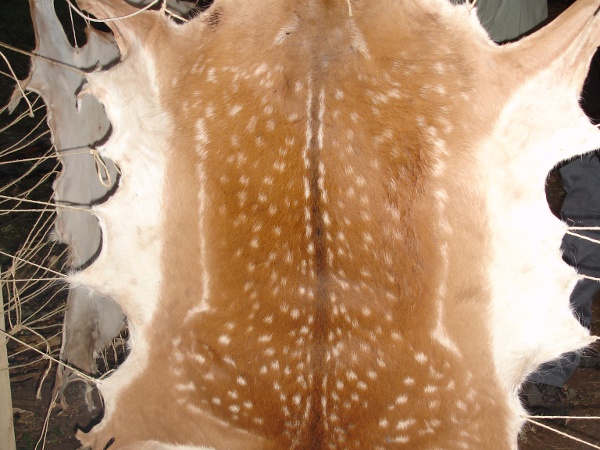
“Tanning a deer hide is a rite of passage, cementing blood ties to our hunting forebears who depended upon skins for warmth and who respected slain animals by never letting any part go to waste.” – Kevin McCafferty
What is skin & hide tanning?
All animals have a skin covering their flesh and fat. Skin is made up of a number of layers, and is predominantly a fibre network of interlocking spiral proteins. Hide tanning is the process by which a raw skin becomes preserved. This means that after the tanning process, the skin should be a stable material, and not rot or be overly attractive to animals and insects. This process generally takes the form of a chemical stage and a physical manipulation with lubricants such as oils.

In traditional (or natural) tanning there are two main techniques:
Emulsifiable oil tanning – sometimes called brain tanning, or smoke tanning. This process involves using an emulsifiable (mixes with water) oil such as brains or egg yolks whilst working the skin soft (physical / oil process). This skin must then be smoked, at which point formaldehyde enters the skin (chemical process) and ensures that even if the skin gets wet, it will retain its softness. This creates a soft, shammy–like leather.
Bark tanning, or vegetable tanning. This process involves immersing the skin in a tannic acid solution (chemical process). The solution is made by boiling high-tannin plant material (such as certain tree barks, nuts and leaves) in water and producing a tannin-rich, acidic tea. Once the skin is tanned through – a matter of days for small skins like rabbits, to months for deer or even years for large cows – it is then removed and rinsed. The skin is then oiled and worked soft (physical / oil process). This creates a firm, waterproof leather.
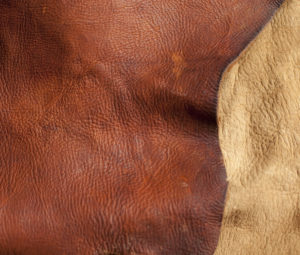
There are a number of other methods, including the use of synthetic chemicals, though often these are neither good for the tanner nor for the environment (see below).
History
Hide tanning is an ancient craft. Humans are different to most animals in a number of ways – a significant one being that we don’t have much in the way of insulative fur or any protective scales. We require clothes in many climates, to keep warm, safe, shaded, and camouflaged. Archaeological finds suggest that hide tanning was carried out by our ancient ancestors, as far back as 70,000 years ago, through the study of various flint scraping tools. Leather would have been the main ‘fabric’ for thousands of years. There are wall paintings of tanning in Egypt, and leather clothing, many thousands of years old has been found preserved in peat bogs throughout Europe.
Many indigenous hunter-gatherers still use traditional tanning techniques, all over the world, from Northern Inuit and Sami to sub-Saharan Africa and North America.
Tanning in Europe was a major occupation, and many traditional tanning techniques have been lost – replaced by industrial chemical processes. There has been a resurgence however – in particular in North America, via the primitive skills movement, and in Scandinavia, learning from traditional Sami techniques.
What skins can be tanned, and what are they used for?
- Furs (for example rabbit, squirrel or fox) can be brain tanned or bark tanned: great for hats and cold-weather clothing.
- Deer skins* (rawhide): a hard, inflexible, untanned skin useful for drums, containers or cordage.
- Deer skins* (buckskin): a soft ‘shammy’-like leather made using the emulsifiable oil technique – useful for clothing, bags and moccasins.
- Deer skins* – bark tanning creates a firm waterproof leather that’s great for bags, straps and belts.
- Sheep skins (with the hair kept on) can be brain or bark tanned, great for rugs or coats.
- Fish skins: can be brain tanned or bark tanned for a textured, strong material, good for bags, clothing and jewellery.
- Glue: any mammal skin can be made into a water-soluble glue by boiling and reducing the liquid. The glue is made from collagen in the skin.
*or any other hoofed animal such as sheep, goat, moose etc.

For leather and buckskin the hide preparation process is generally:
- Soaking – in an alkaline solution such as wood ash or hydrated lime (this dissolves mucous, makes the hair slip out and puffs up the fibres).
- Dehairing – using a tool to remove the hair (for buckskin also removing the grain – the outer layer of skin).
- Scraping – fleshing and membraning – removing excess fat, flesh and membrane (skin layer).
- Rinsing – rinsing out the alkali and bringing the hide back to neutral or acidic pH.
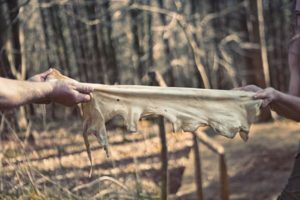
…and then either:
Brain tanning: soaking in a brain solution, and stretching the skin out, and repeating this process until the hide comes soft and dry, and then smoking the hide over a cool smokey fire; or:
Bark tanning: soaking the skin in tannin solution – initially a weak solution, gradually getting stronger, until the hide is tanned through. Then softening with oil.

Commercial chemical tanning
It’s worth mentioning the predominant way most modern leather is tanned – in commercial tanneries, using a chromium solution. The chemicals used in this process are particularly harmful, and when allowed to leach into waterways, cause problems for humans, animals and plant life. Often these tanneries are located in developing countries with more lenient environmental and work safety laws – so they can more easily get away with polluting waterways and harming the health of workers and local residents.
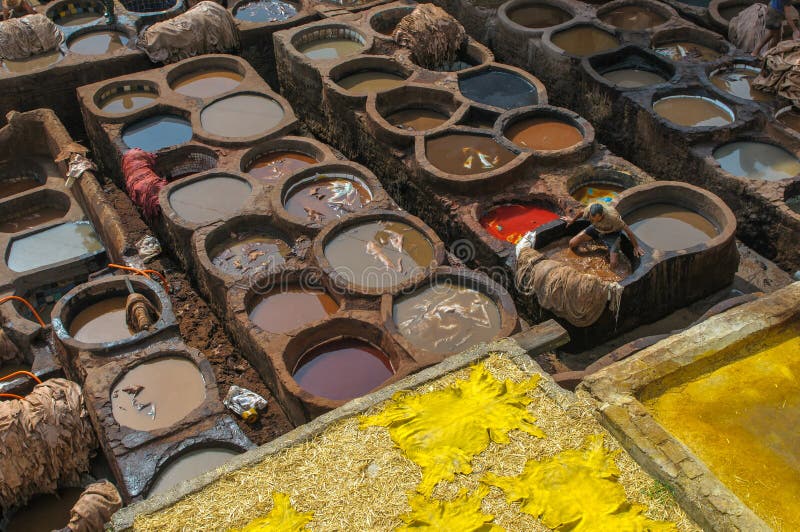
What are the benefits of hide tanning?
- By tanning in a traditional, natural way you are creating an alternative to the extremely damaging commercial chemical tanning industry.
- Almost everything needed – skins, bark, brains, etc. – can be obtained for free, and you can create a useful product from biodegradable, non-toxic materials that might otherwise have been thrown away.
- When working with skins, people feel a sense of connection to the natural world around them, and to our ancestors who would have tanned as part of their everyday lives.
- If you’re tanning anything the size of a deer skin or larger, you get a great upper-body workout as you persevere to work it soft for hours!
- You ‘re helping to revive an ancient skill, that could also be turned into a career.
- The end result – leather – can be crafted into beautiful, useful things.
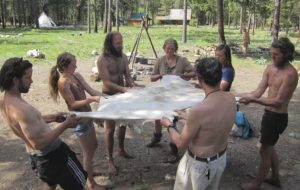
What can I do?
Hide tanning is a tactile skill which involves paying attention to subtle differences in the skin, and is not easily learnt from a book. You can attend a course in hide tanning; and there are some useful websites and resources on our links page.
There are a few key tools and pieces of equipment needed to process larger skins – a scraping tool and beam, and some softening tools. Once you get an understanding of the process and the tools, it’s totally doable in a garden or even out in the woods.
Fish skins can be done in the kitchen, as they’re small and don’t make much mess – but other tanning is best done outdoors. It shouldn’t be a smelly affair – unless you leave something too long and it starts to rot!

Obtaining skins
There are of course some ethical considerations when it comes to obtaining skins, so do ask questions of whoever is supplying your skins. Generally, you can find enough ‘waste’ skins – that would have otherwise been thrown away, for example:
- Deer skins – from deer stalkers or deer farms.
- Rabbits, foxes and squirrels – whether you agree with it or not, all of these are considered pests on some farms, and are culled. They are often then thrown away or left to rot on the land. Talk to local farmers and find out if you can divert their waste and make something beautiful out of what would have been disposed of.
- Fish skins – can be obtained by asking nicely at your local fishmongers.

Skinning
Skinning animals is also a useful skill, though you’ll often get the skins already off the animal from the butcher or game dealer. It is also a skill best learnt in person rather than online, and as the old saying goes “there is more than one way to skin a cat”. There are some good videos on the links page, and here is an excellent one:
Storing skins
If you can’t use a skin immediately, it’s important to store it correctly to avoid rotting. Options are:
- Freezing – skins will keep well for a long time in a freezer (this is the only option for storing fish skins).
- Salting – sprinkling the flesh-side of the skin with salt and letting it drip dry then rolling and storing away from animals (this is just a storage method, and not, as is commonly misunderstood, a part of the tanning process).
- Drying – so long as a skin remains fully dry, bacteria cannot begin the decay process (though insects and rodents might damage it).
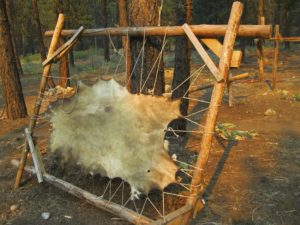
And of course tanning is just the first stage of the transformation of raw material into beautiful fabric, which can then be crafted into many different creations. Sewing buckskin / leatherwork is an art in itself, and with this you can create clothes, bags, shoes, belts, and so much more.
Thanks to Jessie Watson Brown of Oak & Smoke Tannery for information and pictures.
The specialist(s) below will respond to queries on this topic. Please comment in the box at the bottom of the page.

Jessie Watson Brown is on a path of rewilding and reskilling. Weaving together a deep reskilling through making and crafting using natural materials, with immersing herself in the natural world and learning the ways of our ancestors. She is a tanner and basket weaver. Jessie is based on Dartmoor, Devon, and along with Jane Robertson, offers courses and camps in tanning, craft, wild skills and nature connection. More information can be found at Oak and Smoke Tannery.
The views expressed here are those of the author and not necessarily lowimpact.org's
14 Comments
-
1Jjack lord May 22nd, 2019
Hello Jessie Watson . How can one prevent a calf hide from continually getting hard after it has gone through the process of tanning .(We used egg tanning).
-
2Jessie Watson Brown May 22nd, 2019
Hi jack…. there could be any number of reasons that it is going hard. The two main ones are that there are not enough oils (egg yolk) penetrated deep enough into the hide so it won’t become flexible.
The other main reason may be that you didn’t work it enough as it dried. You must keep working the hide until it is fully dry. If it is a bit damp when you leave it then those parts will go stiff.
I imagine with a calf hide you would want at least 20 eggs. Depends how big it is. And some soap and oil in there would help too.
I’ve not tanned cattle. So I can’t help fully with specific experience. But I have done moose which must be similarly thick!
I hope that helps.
Jessie
-
3Pip Traucnieks July 1st, 2019
Hi, I have brought a reindeer hide back from Helsinki airport a couple of years ago, I have just noticed it is starting to rot out and the fur is falling off in this area. Any advice please?
-
4Jessie Watson Brown July 9th, 2019
Hi Pip
It really depends how it was tanned – I imagine if you bought it in an airport it would have been chrome (chemically) tanned – in which case I am no expert!
The fur on chemically tanned reindeer skins does seem to shed really easily – I’ve noticed it on most that I have seen. I’m not sure what you mean about it rotting – did you leave it wet somewhere? If it was wet for a while it could rot – but the chemically tanned ones don’t tend to do that much. they do, after many years, disintegrate as they are weakened by the tanning process they went through.
If it was just raw or fat tanned, then you need to make sure you store it dry (or dry it out if it gets wet) and not let moths get to it (freeze it every now and then is good to prevent that).
Sorry – not much advice, just an explanation – there isn’t much I know of that you can do once a reindeer starts shedding fur.
Jessie
-
5James Whittle June 18th, 2020
Hi, I have some Deer hide offcuts I’m looking to make into rattles, but it’s pretty soft, would dent easily. Is there a way of hardening the hide ?
many thanks
James
-
6Wendy Winstanly June 28th, 2020
Hello. I have been making rawhide drums for some years I wanted to make one with the hair on, from a deer. Is there anything other than fleshing and drying the skin side I should do to keep the hair on.?
Thank you
-
7jessiewatsonbrown July 3rd, 2020
@James Whittle
It depends how the deer hide was originally treated – is it rawhide? or tanned hide?
I don’t know of any way to make it stiffer naturally (theres probably some chemical thing!)
Generally rattles are made from the neck of the animal which is one of the thickest parts
-
8jessiewatsonbrown July 3rd, 2020
Wendy Winstanly
That should do it – but you have to be careful to make sure it dries fairly soon – a day or so – as you don’t want it to stay damp under the hair and rot – this would cause the hair to fall out.
Also be careful about moths when you store it!
-
9stacey mccabe August 11th, 2020
Hi, my partner and I have gotten into tanning deer hides (using leder tanning kit) but we have the problem of the side rising, just wondering if you could help us with this issue?
thankyou
-
10Rob Preece March 4th, 2021
I am looking for 2 small pieces of deer hide about A4 size. They do not have to be in perfect condition so they could be scraps or off cuts. It would be helpful if I could have them before March 20th.
Many thanks
Rob Preece
-
11Dave Darby March 5th, 2021
Rob – Jessie messaged you – hope you got it
-
12Teresa April 25th, 2021
Hello
I am looking for two pieces of deer hide to make two rattles…. can anyone help please?
Thanks
Teresa
-
13Jessie Watson Brown May 3rd, 2021
Hi Teresa,
I can provide you with rawhide for rattles – I’ll contact you
cheers
-
14Jessie Watson Brown May 3rd, 2021
Hi Teresa,
Sorry I realise I don’t have a way to see your contact details – please email me on [email protected]
Jessie




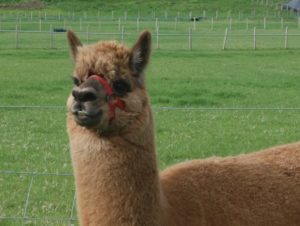 Alpacas
Alpacas
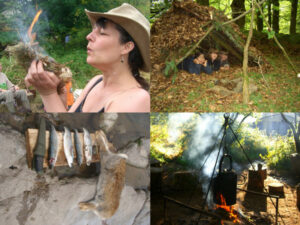 Bushcraft
Bushcraft
 Cattle
Cattle
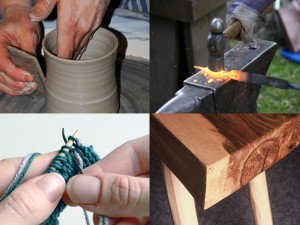 Craft production
Craft production
 Game / wild meat
Game / wild meat
 Goats
Goats
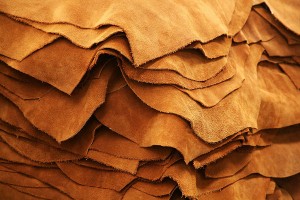 Leatherwork
Leatherwork
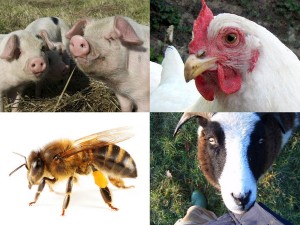 Keeping livestock
Keeping livestock
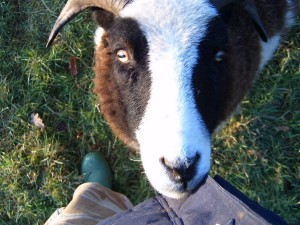 Sheep
Sheep


